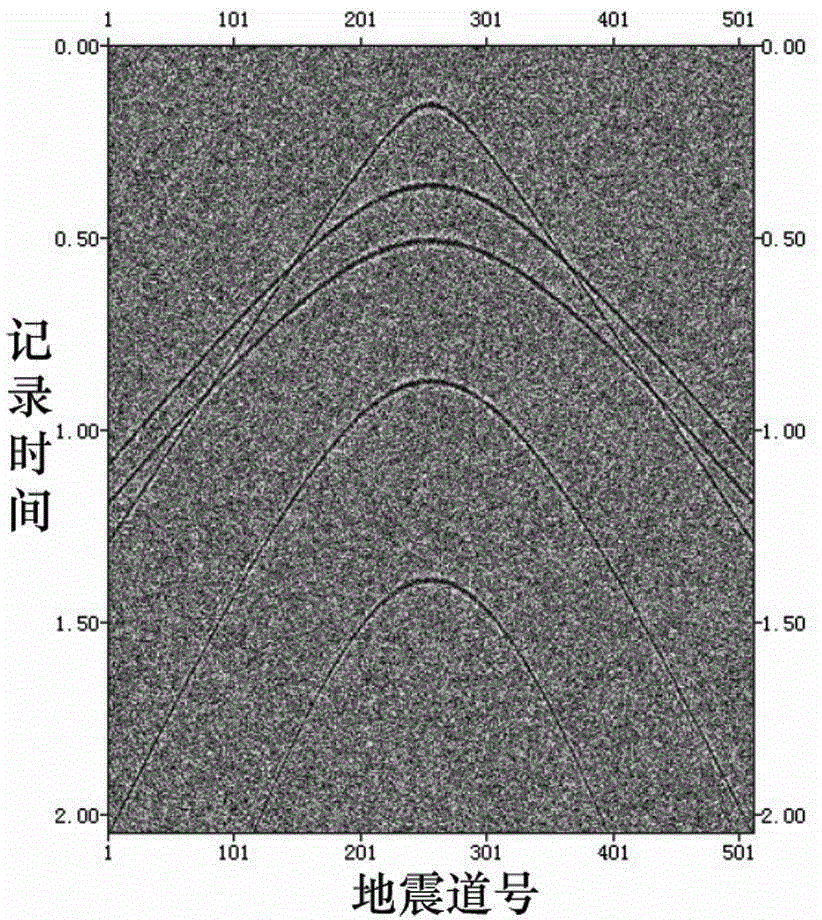Combined attenuation random noise processing method based on curvelet transform and total variation
A curvelet transformation and processing method technology, which is applied in the field of seismic exploration and can solve the problem of uneven edges of the event axis.
- Summary
- Abstract
- Description
- Claims
- Application Information
AI Technical Summary
Problems solved by technology
Method used
Image
Examples
Embodiment 1
[0054] A joint attenuation random noise processing method based on curvelet transform and total variation, the steps are as follows:
[0055] 1) Acquisition of seismic data:
[0056] Acquisition of simulated data: The single-shot seismic data is simulated through the forward modeling of the wave equation model, and the technicians provide the migration and stacking data.
[0057] Acquisition of measured data: Arrange the location of the excitation point and multiple receiving points, and then generate seismic waves through the explosion of explosives embedded in the excitation points, and the geophones placed at each receiving point receive the seismic waves reflected from the underground reflection interface. The seismic wave data excited by the same shot received by the detector forms single-shot data.
[0058] 2) Single-shot seismic data to be acquired f Curvelet transform
[0059] for seismic data f Perform curvelet transform to obtain curvelet transform coefficients ...
Embodiment 2
[0090] like Figure 8 — Figure 12 , is the result of migration stack seismic data processing of a working area in the northern Jiangsu exploration area of Jiangsu Oilfield.
[0091] The difference from Example 1 is that in step 2), the superposition data is used for curvelet transformation, and the superposition data acquisition method is as follows: performing surface wave and abnormal amplitude attenuation and surface consistent energy compensation on multiple single-shot data acquired , surface consistent deconvolution, surface consistent residual static correction, and then sorted into the common center point data domain for velocity interpretation, using the explained speed for dynamic correction, and superimposing the dynamically corrected data in the common center point domain , to get the overlay data. The remaining steps and processing methods are the same, only the specific parameter values are different.
[0092] The result after processing is as follows:
...
PUM
 Login to View More
Login to View More Abstract
Description
Claims
Application Information
 Login to View More
Login to View More - Generate Ideas
- Intellectual Property
- Life Sciences
- Materials
- Tech Scout
- Unparalleled Data Quality
- Higher Quality Content
- 60% Fewer Hallucinations
Browse by: Latest US Patents, China's latest patents, Technical Efficacy Thesaurus, Application Domain, Technology Topic, Popular Technical Reports.
© 2025 PatSnap. All rights reserved.Legal|Privacy policy|Modern Slavery Act Transparency Statement|Sitemap|About US| Contact US: help@patsnap.com



